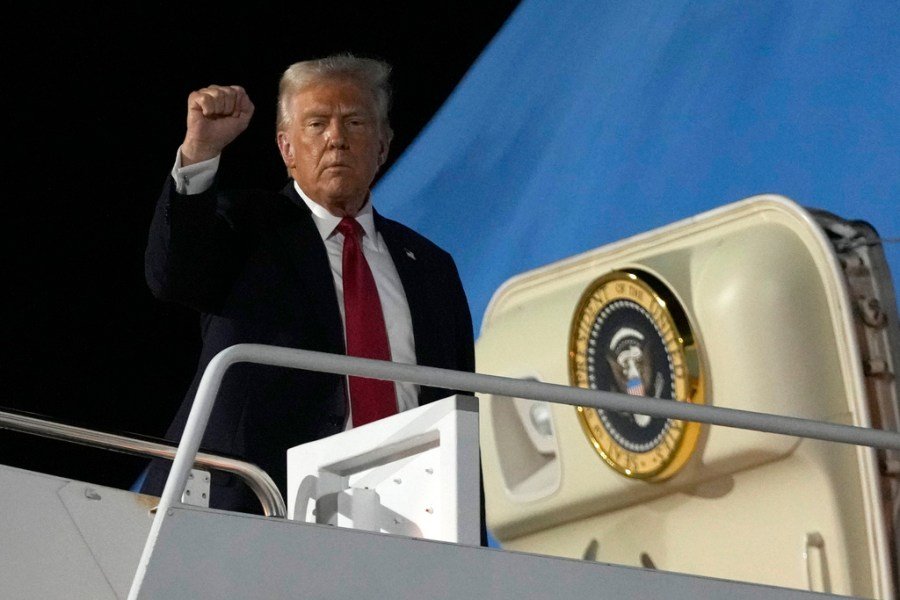Biden’s in-office work policy harmed federal employee retention. Trump’s could destroy it.

President Trump’s recent announcement of a full-time, five-day-a-week return-to-office mandate for federal employees has sparked heated debates across the nation. Framed as a strategy to reduce the size of the federal workforce and boost efficiency, this decision overlooks a critical consequence — the potential loss of the government’s most experienced and skilled employees, who will have the best prospects in the private sector.
If history is any indication, this sweeping policy, along with the smooth off-ramp of a sweeping government employee buy-out, could usher in a new wave of resignations that would undermine the very efficiency it seeks to enhance.
We don’t have to speculate blindly about what might happen. Just two years ago, former President Biden’s more moderate in-office work mandate, which tried to increase the amount of time federal staff worked in their offices, triggered a substantial increase in turnover rates among senior and skilled employees.
A groundbreaking study conducted by Mark Ma and his colleagues at the University of Pittsburgh, using data from Revelio Labs, provides clear evidence of the damage caused by Biden’s policy. This research not only quantifies the losses but also offers critical insights into the repercussions of Trump’s far more stringent policy.
In March 2022, Biden urged the “vast majority” of federal employees to return to their offices at least 60 percent of the time as pandemic conditions improved. This hybrid return-to-office policy, less demanding than Trump’s, still caused significant disruption. Turnover rates among senior employees — those ranked as directors, supervisors or higher — spiked by 26 percent following the announcement. These individuals, equipped with decades of institutional knowledge and leadership expertise, found themselves more likely to exit federal employment for opportunities in the private sector, where remote work flexibility remains a highly valued norm.
Similarly, the impact on highly skilled employees was profound. Those with advanced qualifications and specialized abilities experienced a 32 percent increase in turnover. These individuals, who often possess the most sought-after skills in technology, science and management, represent the intellectual and operational core of federal agencies. Their departure has left many departments struggling to maintain efficiency and continuity in their operations.
This exodus was not an isolated trend. Across federal agencies, including key departments such as Defense, Health and Human Services and Homeland Security, the data consistently indicated that employees with the most to contribute to the public sector were also the most likely to leave when faced with an inflexible return-to-office work policy.
Other authoritative sources back up these findings. The Government Accountability Office, in a November 2024 report, evaluated four federal agencies — the Farm Service Agency, the IRS, U.S. Citizenship and Immigration Services and the Veterans Benefits Administration — to examine the effects of telework policies on recruitment, retention and performance. The findings are illuminating.
Agencies with robust telework policies, such as the Veterans Benefits Administration, which reported telework at 66 percent of total hours worked, experienced significant advantages. Telework helped broaden the IRS’s talent pool, enabling the agency to attract customer service representatives from regions far beyond its physical office locations. Similarly, USCIS reported a significant boost in applicant interest for positions offering telework, demonstrating its appeal to prospective employees.
In contrast, the Farm Service Agency, where only 11 percent of hours were teleworked, faced pronounced recruitment and retention difficulties. Officials attributed these challenges, in part, to restricted telework availability. Although compensation and workload pressures were also cited as factors, the lack of flexibility in telework options emerged as a clear deterrent to the agency attracting and retaining top talent. These findings align closely with the turnover data from Biden’s return-to-office policy, underscoring the risks of rigid in-office mandates.
Further support for telework as a retention and productivity tool comes from a report by the Office of Personnel Management. The report found that 72 percent of federal supervisors believe telework has either maintained or improved employee productivity. Additionally, 84 percent of federal employees with telework opportunities reported higher job satisfaction, citing improved work-life balance as a primary factor. The Federal Employee Viewpoint Survey further confirmed these trends, with 78 percent of respondents agreeing that telework positively contributes to their work-life integration.
These statistics not only validate the effectiveness of telework but also highlight its critical role in retaining high-performing employees.
The broader implication is that when federal agencies offer flexible work options, they strengthen their ability to attract and retain talent while maintaining productivity. Conversely, a mandated full-time in-office work policy, as Trump proposes, will likely reverse these gains, driving away employees who prioritize flexibility and work-life balance.
If Biden’s hybrid model caused such a sharp rise in turnover, Trump’s full-time mandate is poised to accelerate the brain drain on an unprecedented scale. Senior employees, already disproportionately affected by in-office requirements, are likely to leave in droves. These individuals often have extensive professional networks and the financial stability to transition to private-sector roles that offer remote or hybrid work arrangements.
Similarly, skilled employees, who were 32 percent more likely to quit when Biden imposed his policy, will now be presented with an even starker choice: abandon the flexibility they value or abandon their federal careers.
The consequences of all this talent loss will reverberate far beyond individual agencies. Federal departments rely on their senior and skilled workforce to navigate complex challenges, implement policies, and deliver services efficiently. To lose these employees in great numbers is to risk both operational disruption and a decline in public trust, as citizens experience delays and inefficiencies in essential services. Trump’s mandate, while aimed at reducing the federal workforce, risks creating a crisis that will cost far more than it saves.
Gleb Tsipursky, Ph.D., serves as the CEO of the hybrid work consultancy Disaster Avoidance Experts and authored the best-seller “Returning to the Office and Leading Hybrid and Remote Teams.”




Post Comment